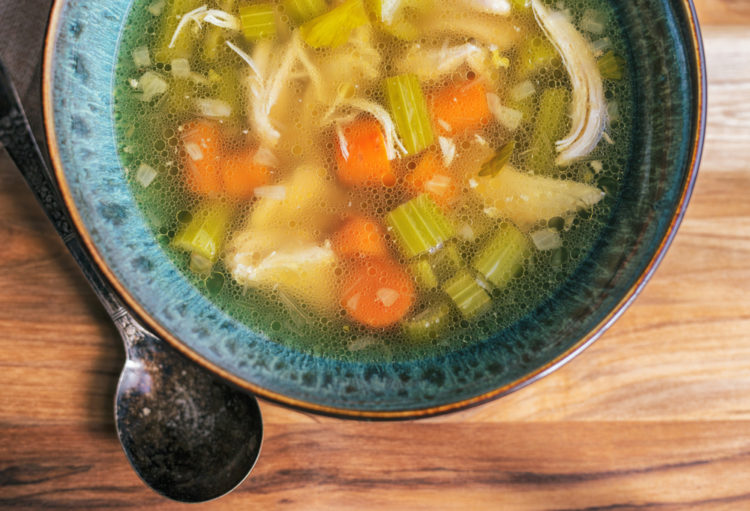If you’ve arrived at this page wondering how you didn’t spot your child’s flu earlier, don’t be hard on yourself – the flu is a bit harder to pick up on than many people think.
Notice how I said “harder” and not “impossible?”
While the flu can sneak up on your child, there are several things you can keep an eye out for. There are also several things you can do to nip the flu in the bud.
Let’s dive right in.
Early Flu Symptoms

In the U.S., flu season runs from October to May.
That’s not to say the flu doesn’t happen outside of those months, but that’s when you should take extra caution and be on the lookout for early symptoms.
- Sudden or excessive fatigue
- Body aches
- A persistent cough
- Sore throat
- Diarrhea
- Nausea
- Stomach pain
How The Flu Spreads

Exactly like that.
There are three main types of the flu. Type A, the most severe, is most active during the cold winter months. Type B is active year-round, as is Type C, the least severe flu.
All are spread the same way; they leave the infected individual’s body through coughs, sneezes and saliva.
The Centers for Disease Control and Prevention says that exposure to these drops from as far away as six feet is enough to catch the virus. The virus can also be caught by touching an infected object and later touching the eyes, nose or mouth.
It’s not hard to see how children are such an easy target for the flu, with all the germ-laden surfaces they come into contact with on a daily basis. Add to that their developing immune systems, and you’ve got a recipe for influenza-themed disaster!
Treatment
It’s important that you consult with your child’s doctor to determine if they are indeed suffering from the flu or another virus/illness.
Your doctor can prescribe medications for your child, but it’s important to be aware of the side effects. Further, many over-the-counter medications used to treat the flu contain acetaminophen, a compound known to produce severe side effects, including dulling of emotions and increased risk of diseases with continued use.
In most cases, the flu can be treated effectively at home using natural remedies.
Consult with your child’s doctor to determine whether the following might be suitable to his or her case.
While catching the flu early will certainly help your child recover sooner, these remedies will help at any stage.
1. Chicken Soup

A study published in the journal Chest shows that chicken soup really does help heal upper respiratory tract infections like the cold, and most importantly, the flu!
To make chicken soup at home, heat oil in a large pot. Cook onions and celery in the oil until they become translucent. Next, season chicken pieces with salt and pepper and place them skin-side down in the pot for about five minutes.
Add carrots and cover them with water. Let this simmer for 1 hour. Then, remove the chicken from the soup and let it cool. Remove the meat from the bones and place it back in the pot. Let it cook for 20 minutes.
2. Homemade Throat Lozenges

Store-bought throat lozenges might soothe your child’s flu-based sore throat but most of them aren’t going to produce any lasting effects.
Why? Because they’re filled with sugar and artificial flavoring.
Skip the lemon-flavored candy and make your very own throat lozenges with real fruit and flavors.
You’ll need:
- Half a cup of water
- 1 tablespoon of honey
- 1 cup of granulated sugar
- Powdered sugar for coating (makes the lozenges hard)
- 1 tablespoon of fresh lemon juice
- Half a teaspoon (or more) of ground ginger
- A quarter teaspoon of ground cloves
Combine all the ingredients and place them on a baking sheet in dabs an inch across. Cook at 300º F for between 15-20 minutes. Then, dust with the powdered sugar. They should be hard, not chewy.
Give your child a few of these daily.
3. Garlic Gargle

Gargling can help your child get rid of thick mucus that collects at the back of the throat during the flu. It can also relieve stuffy ears.
And there’s no better way to harness the power of gargling than by using one of nature’s most powerful antibiotics – garlic!
Add one pinch of salt and one clove of garlic to a large glass of boiling water. Let this steep for 2 minutes. Then, remove the clove and have your child gargle at the back of their mouth, spitting it out once they’re done.
4. Saline Spray

Saline spray can be incredibly effective in clearing your child’s sinuses and providing relief from congestion. All you need to do is mix one cup of water and half a teaspoon of salt. Let this boil for 15 minutes to distill the water.
Once it’s cooled to room temperature, place the spray in a clean bulb and have your child gently spray the fluid through each nostril.
Do you have you any tricks up your sleeve for fighting the flu in children? Let us know in the comments!
Sources:
AboutKidsHealth.ca
RodaleWellness.com
HelloGlow.co
Food Network
CDC
WebMD


